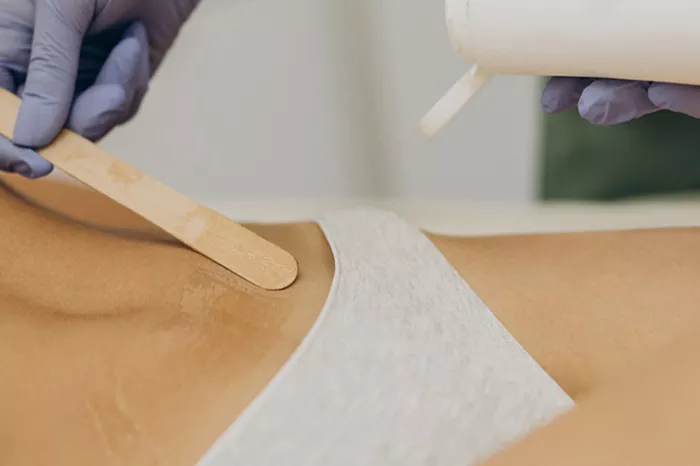Laser hair removal for the bikini area is a popular cosmetic procedure. Many people are curious about the pain levels associated with it. This comprehensive guide explores the discomfort levels, factors influencing pain, and ways to manage it.
Understanding Bikini Laser Hair Removal
What Is Bikini Laser Hair Removal?
Bikini laser hair removal is a cosmetic procedure that uses laser technology to remove unwanted hair from the bikini area. The laser targets the melanin (pigment) in the hair, heating it and destroying the hair follicle. This process reduces hair growth over time.
How Does It Work?
Laser Technology: The procedure uses a concentrated beam of light to target hair follicles.
Hair Follicle Destruction: The light is absorbed by the melanin in the hair, converting to heat, which destroys the hair follicle.
Hair Reduction: After several sessions, hair regrowth is significantly reduced.
Factors Affecting Pain Levels
Skin Sensitivity
Individual Sensitivity: Some individuals have more sensitive skin, which can affect their pain perception.
Skin Type: Different skin types react differently to the laser. Darker skin may experience more discomfort due to the higher melanin content.
Hair Type and Color
Hair Color: Darker hair absorbs more laser light, which can increase discomfort.
Hair Thickness: Coarser hair tends to be more painful to remove compared to finer hair.
Laser Type
Different Lasers: Various lasers are used for hair removal, and some are less painful than others.
Cooling Systems: Modern lasers often have cooling systems that help reduce pain.
Treatment Area
Sensitive Zones: The bikini area is more sensitive compared to other parts of the body, leading to increased pain.
Pain Variation: Pain can vary depending on the exact location within the bikini area.
See also: Does Pico Laser Remove Freckles?
Pain Management Strategies
Topical Anesthetics
Numbing Creams: Applying a topical numbing cream can help reduce pain before the procedure.
Prescription Options: For more severe cases, prescription anesthetics might be recommended.
Cooling Devices
Integrated Cooling: Many lasers come with integrated cooling devices that reduce surface temperature and minimize pain.
External Cooling: Ice packs or cooling gels can be applied to the area before and after treatment.
Pain Relievers
Over-the-Counter Medications: Taking pain relievers like ibuprofen before the procedure can help manage discomfort.
Consultation: Always consult with your practitioner before taking any medication.
Professional Tips
Experienced Technicians: Choosing a skilled technician can ensure a smoother and less painful experience.
Communication: Inform your technician about your pain threshold and any concerns you may have.
What to Expect During and After the Procedure
During the Procedure
Sensation: Most people describe the sensation as a rubber band snap or mild discomfort.
Duration: The procedure is relatively quick, often lasting only a few minutes for the bikini area.
Post-Treatment Care
Redness and Swelling: It’s normal to experience some redness and swelling in the treated area.
Pain Management: Over-the-counter pain relievers and cooling gels can help alleviate post-treatment discomfort.
Long-Term Considerations
Multiple Sessions: Bikini laser hair removal typically requires multiple sessions for optimal results.
Follow-Up Care: Adhering to aftercare instructions can reduce discomfort and improve results.
Comparing Bikini Laser to Other Hair Removal Methods
Shaving
Pain Level: Shaving can cause irritation and ingrown hairs but is generally less painful than laser hair removal.
Results: Shaving provides temporary results compared to the long-term hair reduction from laser treatments.
Waxing
Pain Level: Waxing can be quite painful, as it involves pulling hair from the root.
Results: Waxing provides longer-lasting results than shaving but typically requires more frequent sessions compared to laser hair removal.
Electrolysis
Pain Level: Electrolysis can be more painful than laser hair removal, as it involves a probe being inserted into each hair follicle.
Results: Electrolysis is a permanent hair removal method, unlike laser hair removal, which requires maintenance sessions.
Conclusion
Bikini laser hair removal can be mildly uncomfortable, but it is generally manageable with proper pain management strategies. Understanding the factors that influence pain and utilizing available methods to reduce discomfort can make the experience more tolerable.
By choosing the right clinic, discussing your pain tolerance with the technician, and following aftercare instructions, you can ensure a more comfortable and effective hair removal process.
FAQs
1.How do I prepare for my first bikini laser?
Before your first session, avoid sun exposure and tanning. Shave the area 24 hours before the appointment, and avoid using lotions or deodorants on the day of the treatment. Consult your provider for any specific instructions.
2.Is laser more painful than waxing?
Pain tolerance varies, but many find laser treatments less painful than waxing. Laser often feels like a rubber band snapping against the skin, while waxing can cause more discomfort due to hair removal.
3.Is bikini laser worth it?
Many find bikini laser hair removal worth it due to its long-term results and reduction in hair regrowth. It provides a more permanent solution compared to waxing or shaving.
4.Is laser bad for your pubic area?
Laser hair removal is generally safe for the pubic area when performed by a trained professional. It’s important to follow pre- and post-treatment care to minimize any risks.
5.What does bikini laser feel like?
The sensation can be described as a quick, sharp sting or a snapping feeling. Many find it manageable with the help of cooling gels or numbing creams, and any discomfort typically subsides quickly.
Related topic:
How Does The YAG Laser Work For Dark Circles?
How Much Does Laser Freckle Removal Cost?
Is Diode Laser Painful? [Revealed]

